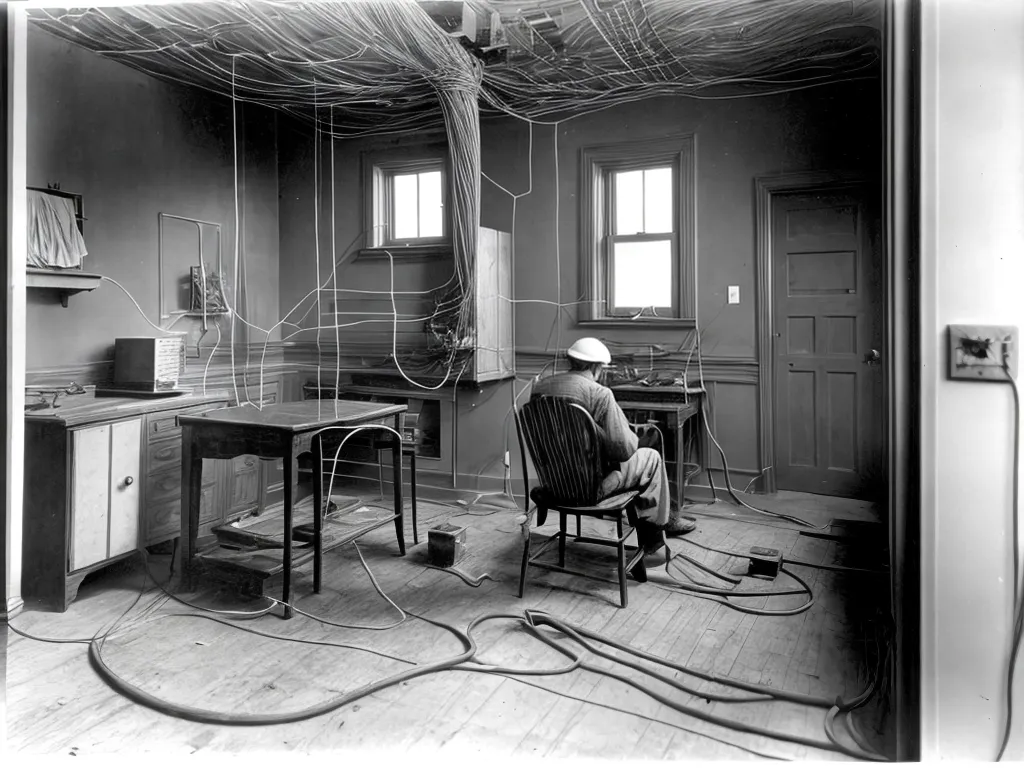
How the First Electric Wires Were Dangerously Installed in Homes
Introduction
When Thomas Edison and others first began installing electric wiring in homes in the late 1800s, the process was extremely hazardous and resulted in many fires and electrocutions. As I research the early days of residential electrical work, I'm shocked by how dangerous it was for both homeowners and electricians. In this article, I'll provide an in-depth look at how the first electric wires were installed in homes and the many risks involved. There's no doubt that those pioneers paved the way for the safe electrical systems we rely on today. However, their trial-and-error approaches show just how little was known about electricity at the time.
The Dangers of Early Wiring Methods
In the early days of residential electricity, wiring methods were crude and downright dangerous:
-
Open splices - Wires were spliced together and left exposed rather than inside junction boxes. This led to electrocutions and made fires more likely.
-
Cloth insulation - Early insulated wires had cloth or rubber insulation that easily cracked and deteriorated. This allowed wires to arc, overheat, and start fires.
-
Gas lighting wires - Some homes retrofitted existing gas lighting wires for electricity. But these wires weren't designed to handle the higher voltage, heat, and safety concerns of electricity.
-
Lack of circuit breakers - Early systems lacked proper overcurrent protection. One small wiring fault could send a surge of power through the home's wires and start an electrical fire.
-
Direct burial - It was common to simply bury electrical wires underground with no conduit. This allowed wires to become damaged and created shock risks.
As you can imagine, these poor wiring techniques led to many tragic fires, injuries, and deaths in early electrified homes. Clearly, safety standards and proper materials specific to electrical systems were desperately needed.
Hazardous Installation Methods
Aside from the inherent dangers of early wiring itself, installation methods also posed safety risks:
-
Running wires through walls and ceilings without proper supports frequently led to damaged insulation and electrical shorts.
-
Exposed Splices were often left hanging openly without junction boxes, allowing contact with combustible materials.
-
Minimal wire was used to save on costs, leading to severe overloading as more devices were added. This caused overheating and fires.
-
There was little knowledge of proper grounding techniques to prevent shocks and contain faults. Improper grounding amplified the hazards.
-
Even experienced workmen lacked understanding of voltage drop, insulation ratings, and other key electrical safety principles. Safety was learned through deadly trial and error.
While creative in their own right, early electricians simply didn't have sufficient experience with the unique demands of electrical systems. They borrowed practices from other trades that transferred poorly.
Deadly Learning Experiences
As great as the benefits of electricity were, its dangers were poorly understood in the late 19th century. Many tragic stories emerged during this period:
-
In New York City in 1890, a referral hospital treated 64 people for electrical accidents in just three months, including shocks and burns.
-
The first recorded electrical fatality was reported in 1879 when a New York man was electrocuted while working on electrical equipment.
-
In 1889, the wife of an electrician in New York City was killed after stepping on a charged electric coil wire on the floor.
-
In the same year, a Boston man was electrocuted when he threw a switch to turn on electric lights, not realizing a wire was crossed with one carrying much higher voltage.
-
Newspapers in the 1880s frequently reported electrical deaths and "narrow escapes" as loose wires fell during storms and made contact with metal surfaces.
These early electrical mishaps provided tragic indications of the dangers posed by electricity and how little was understood. Unfortunately, many more people were injured or killed over the next several decades as electrical use expanded.
Developing Electrical Safety Standards
After seeing increasing electrical tragedies, steps were taken to improve safety:
-
The National Board of Fire Underwriters formed in 1892 and began analyzing electrical fires to recommend codes.
-
In 1897, the National Electrical Code (NEC) was published by the National Fire Protection Association, detailing proper wiring methods.
-
Product safety testing groups like Underwriters Laboratories (UL) were established to test devices and materials for minimum safety levels.
-
Circuit breakers, conduit, junction boxes, and other safety devices were developed specifically for electrical use.
-
Licensing and training requirements ensured only qualified electricians performed installation work.
While electricity was still the cause of many fires and accidents in the early 1900s, each tragedy provided important lessons that brought us closer to the well-engineered electrical systems we know today. The cost was very high in human life and property, but critical knowledge was gained.
Conclusion
Looking back on the early days of residential electricity, it's clear just how dangerous many common practices were at the time. Hazardous wiring materials, crude installation methods, and lack of safety principles led to many needless tragedies. While heartbreaking, each incident ultimately advanced our understanding of electrical safety. Thanks to those painful lessons, codes and standards were developed to provide the reliable power that's essential to modern life. We owe a great debt to those who were lost for their unintentional sacrifice.